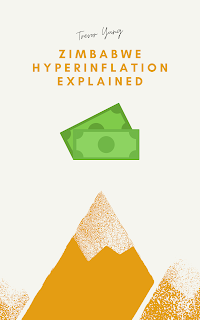The Football War
(Please note that this article only covers the main points of the war.)
Football, one of the world's most popular sports, is simple to play, easy to understand and all you need is a ball and some imagination. But some countries love football a bit more than others such as El Salvador and Honduras. In fact, they love it so much that they went to war over it.
Tensions:
First of all, you should know that tensions were already high between the two countries. Let me explain. El Salvador albeit being significantly smaller than Honduras has a way larger population than Honduras and so, when illegal immigrants from El Salvador started to flood into Honduras, the Honduran Government didn't like that. The solution? Well, terrorize the Salvadorians of course. (Don’t do that) The Honduran government also started evicting the refugees (who had been living in Honduras for generations) to go back to El Salvador. The Salvadoran government protested and cited moral reasons but in reality, they were just getting a little too crowded.
Football:
So, tensions were at an all time high until… FOOTBALLLLLLLLLLLLL! The 1970 World Cup qualifiers and both countries finished top of their qualifying tables, now, it was time for them to play against each other in a series of matches (3 matches). The first match took place in Honduras. Before the game, the Hondurans taunted the Salvadorians and threw rocks at them. The exhausted Salvadorians lost 1 - 0 to the Hondurans.The next game would be in El Salvador, and this time, the tables would be turned. Before the game, the Hondurans endured a sleepless night in their hotel with people throwing rocks and other objects at them, and to add insult to injury the Salvadorians raised a dirty rag instead of the Honduran flag during the pregame meetup. The Salvadorians won 3 - 0 against the tired Hondurans. Now with the score tied 1 - 1, it all came to the final match.
The final straw:
This match was a close one, but the Salvadoran team pushed through and won the game 3-2. That was the final straw, Hondurans increased their beatings and terrorised the Salvadorians even more. With a refugee crisis and its people being terrorized, El Salvador severed all diplomatic ties with Honduras and declared war.
The War:
El Salvador struck first by conducting air raids on strategic locations within Honduras including Toncontin International Airport which prevented the Honduran Air Force from getting into the skies. Next, the larger Salvadoran army launched two major offensives along the two roads connecting the two nations. The invasion phase was carried out by three main contingents: the Chalatenango Theater, the North Theater, and the East Theater. The Chalatenango Theater was based on the northwest side of El Salvador, including the areas of Santa Ana and Chalatenango which are across the mountain range close to the Honduran/Salvadoran border, and the Sumpul River. This was a strategic region due to its rich soil and climate. However, this theater would not see any fighting as it was to deploy only in case of a Honduran counterattack into El Salvador. The North Theater was mainly composed of a small unit of armored vehicles/artillery and a large amount of manpower. (Sorry if the explanation is a bit vague here, this is a poorly covered topic in history and it is hard to find information.) The East Theater was to be deployed in the regions of La Unión and Morazán. This theater was composed of a large group of armored fighting vehicles such as the M3 Stuart and a large amount of artillery such as the 105mm M101. Initially, the Salvadoran army made rapid progress shredding through the Honduran defenses and quickly approaching the Honduran capital, Tegucigalpa. The momentum of this advance did not last long however. The Honduran air force reacted by striking the Salvadoran Ilopango air base. Honduran bombers attacked for the first time in the morning of 16 July. When the bombs began to fall, Salvadoran anti-air artillery started firing, repelling some of the bombers. The bombers had orders to attack the Acajutla Port, where the main oil facilities of El Salvador were based. Honduran air-raid targets also included minor oil facilities such as the ones in Cutuco. By the evening of 16 July, huge columns of smoke arose in the Salvadoran coastline from the burning oil depots that had been bombed.
The Ceasefire:
The Honduran government called on the OAS (Organization Of American States) to intervene, fearing that the Salvadoran Army would invade the capital Tegucigalpa. The OAS met in an urgent meeting on 18 July and called for an immediate cease-fire (A truce of some kind) and for El Salvador to withdraw their forces from Honduras. El Salvador resisted OAS’s demands for afew days, demanding that Honduras first agree to pay reparations for the attacks on Salvadoran citizens and guarantee the safety of those Salvadorans who were still in Honduras. A cease-fire was arranged on the night of 18 July and it took full effect only on 20 July.
Thanks for reading this! I haven't been posting articles because I was sick for the week and school has started. In addition, I have started my Ice Hockey season which will delay some posts. But I will try to post more as the year goes on!
Stay safe and bye!
Trevor Yung


Comments
Post a Comment